|
24th September
Tyninghame Bay
Fair weather was expected in the
east. We hadn’t visited Tyninghame Bay for some time so we made the
hour and a half drive out of the rain and into the brighter Lothian
weather. We would keep our eyes open for the Short-toed Lark that had
been recorded there in previous weeks – but more in hope than
expectation. Our Dalkeith Morrisons brekky was first class and set us
up for the long trek around the sands of the Bay. At the salt marsh we came across a
few Fox Moth caterpillars, some crushed underfoot by previous walkers.
A couple of Stonechats sat high on the vegetation of the dunes as a
large flock of excited, mainly young Goldfinches flitted overhead. They
settled on the salt marsh on patches of seeding Sea Plantain to gorge
themselves on their seeds.
Fox Moth Caterpillar
|
Stonechat
|
Goldfinch
|
Sea Plantain
|

|

|

|

|
The tide was low and the River
Tyne wound its way through the vast expanse of its sandy estuary. I was
attracted towards a lone Grey Heron standing midstream watching us
approach. Close by a Greenshank was foraging and on stony patches of
bank a few Ringed Plover scurried about, then stood very very still
probably hoping it made them invisible. A couple of Grey Plover fled
past heading further up the coast. They may be identified by their
black oxters (for non-Scots: that’s “armpits”). They looked as though
they were moulting although the light wasn’t great.
Grey Heron
|
Greenshank
|
Ringed Plover
|
Grey Plover
|
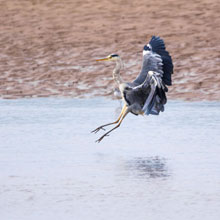
|

|

|

|
The edges of the dunes were
punctuated by patches of flowers. Buff-tailed Bumblebees were working
away on a patch of Sea Rocket, moving persistently from flower to
flower despite the occasional camera lens being thrust in their way!
The Sea Mayweed looked as though it was past its best – we’re well into
Autumn now after all. John pointed out a Wheatear that had flown behind
me, although it was fairly distant. As we moved on I realised I had
overlooked what was probably the most common plant of the salt marsh –
Common Glasswort, a salt tolerant succulent. Its name derives from its
use, in days gone by, for making certain soda-based glass.
Buff - tailed Bumblebee
|
Sea Mayweed
|
Wheatear
|
Common Glasswort
|
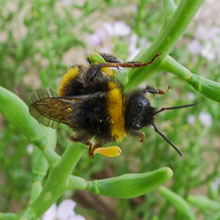
|

|

|

|
After a weary plod across the soft
sands of the mouth of the estuary we reached the sea. We were surprised
to see it was very choppy as the winds were quite light. Gannets were
diving close in and by the breaking waves of the shore a young Gannet
was obviously in some difficulty. It seemed unable to get airborne and
after a few unsuccessful attempts it just sat there exhausted. We left
it to get it’s breath back and trudged on east along the beach. We just
caught sight of the snout of a Grey Seal bobbing about in the waves,
before it disappeared. The beach ahead of us looked bare though, so be
decided to change direction and cross the dunes to reach our car. As we
approached a gap in the dune grasses John nearly stood on a beautiful
wee Snow Bunting. It didn’t fly off which left us thinking it may be
hurt in some way. We took a few pictures then left it in peace.
Gannet
|
Juvenile Gannet
|
Grey Seal
|
Snow Bunting
|

|

|

|

|
Once on the dunes we saw they were
criss-crossed with paths. We came across a few fungii that were new to
us. Later, back home, I identified them as Dune Waxcap, Snowy Waxcap
and Copper Spike. We came across a flower, also new to us which I
subsequently discovered was Blue Fleabane, a plant fairly uncommon in
Scotland.
Dune Waxcap
|
Snowy Waxcap
|
Copper Spike
|
Blue Fleabane
|

|

|

|

|
We noticed that the Blue Fleabane
hosted a horde of red aphids, uroleucon sonchi, just below one of its
flowers, and off the path a large patch of flowering Old Man’s Beard
stood out from the stiff grasses that surrounded it. Right at the end
of our walk a lovely Restharrow flower was in bloom, and nearby the
tiny flowers of Hedgerow Cranesbill.
Aphid - Uroleucon sonchi
|
Old Man's Beard
|
Common Restharrow
|
Hedgerow Cranesbill
|

|

|
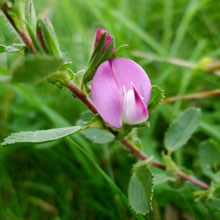
|

|
Despite some disappointing
lighting in parts of the walk we sat sipping our teas, munching
satisfactorily on John’s home-baked apple tart, very pleased with what
had turned out to be a very productive visit. ( Bloody delicious Apple
Tart...John P)
Pictures of the week:
Greenshank
|
Juvenile Gannet
|

|

|
Snow Bunting
|
Common Restharrow
|

|

|
17th September 2017
Stevenston, Saltcoats, Irvine Harbour
We started our Sunday trip as
usual with a Morrisons breakfast, this time in Stewartfield, East
Kilbride. It was a new venue for us and we were both very impressed by
all aspects of our dining experience (9.5/10). My weather app predicted sunny
weather in the west so we drove to Stevenston. I had been tipped off
that there had been a feeding frenzy of birds off the coast there. When we arrived at Stevenston
Point there were Cormorants standing along the breakwater, some in the
characteristic spreadwing pose drying their wings. On the paths behind
us a huge, very active flock of Goldfinch were very unsettled as more
dog walkers were alighting from their cars. On the sea I spotted a
fight among young Herring Gulls and one of them fled with a big crab.
It was all run-of-the-mill stuff for a couple of Rock Pipits that were
patrolling the rocks.
Goldfinch
|
Cormorant
|
Herring Gull
|
Rock Pipit
|

|

|
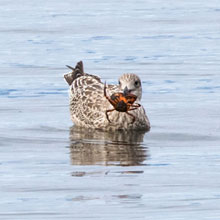
|

|
At the end of the Point a Curlew
was trying to get some shut eye beside a large flock of Oystercatchers
before being spooked by a dog walker who decided to see how far he
could pick his way across the rocks towards the birds. Up went the
Cormorants, Shags and Redshanks. Trying to keep myself from getting
involved with the wanderer, I shifted my attention to a passing Gannet
hoping to catch it diving – no such luck.
Further offshore a Shag was perched on an
exposed rock. The light was getting very gloomy as the clouds thickened. I
could just make out some razorbills some 100m out. A pair of Gannets flew right
over our heads followed soon after by a Cormorant.
Shag
|
Razorbill
|
Gannet
|
Cormorant
|

|
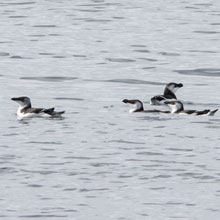
|

|

|
There were sizeable flocks of
Guillemots quite far out but occasionally one would come much nearer
the shore. It was decked out in its distinctive winter plumage. On the
shore the redshanks and oystercatchers were excited for some reason and
offshore a large flock of Gulls were making a fair old racket dipping
and diving probably for fish near the surface.
Guillemot
|
Redshank
|
Oystercatcher
|
Mixed Gulls
|

|

|

|
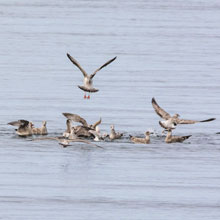
|
We moved north to check out
Saltcoats Harbour. Immediately we spotted a few Ringed Plovers on
rocks. Of course there were the seemingly ever-present Redshanks and a
Curlew was resting awaiting low tide. As we peered over the sea wall a
half dozen Turnstones flew in and landed just below us and did as their
name suggests, they started turning over stones and seaweed in search
of tasty morsels.
Ringed Plover
|
Redshank
|
Curlew
|
Turnstone
|

|

|

|

|
A Herring Gull kept watch from the
highest part of the rock as a pair of Pied Wagtails flitted about the
Turnstones chasing flies. An adult and juvenile Starling had a similar
idea but I think but they were less successful. Our final sighting at
Saltcoats was arguably our best. From a distance we thought a bird
foraging on the shore was a Redshank but on closer examination it
turned out to be a Knot. As we waited for the light to improve it
eventually came much closer, allowing a series of nice shots. Its
plumage was predominantly grey, although traces of its summer red
underbelly were apparent. It was obviously not a flighty bird as it
stood its ground as a very naughty boy lobbed a few stones in its
direction!
Herring Gull
|
Pied Wagtail
|
Starling
|
Knot
|

|

|
 |

|
Our
final stop of the day was Irvine Harbour where we usually have our tea
and buns before driving home. The light was starting to fade badly so
we had a quick scan of the area. A few Mute Swans were feeding at the
mouth of the estuary – the confluence of the Rivers Irvine and Garnock.
Patrolling the near shore were a number of Sandwich Terns. Their
frequent, rapid dives never fail to excite especially when the backdrop
was Ailsa Craig, famous for its manufacture of granite curling stones.
And just as we were returning to the car a Common Seal made a brief
appearance heading out to sea.
Pictures of the week:
Juvenile Starling
|
Knot
|

|

|
10th September 2017
Barns Ness
Before setting off I figured that
the weather would be best the further east we could get. The wild, wet
and windy weather was to have crept slowly east, reaching Dunbar by
about 3pm. So we headed for Barns Ness. After a Morrisons’ breakfast
experience, much improved from last week, we outran the rain to reach
Whitesands Quarry pool and had a quick search for the reported
Bar-headed Goose – to no avail! We pressed on to Barns Ness much
encouraged by the big blue areas of skies that were developing and set
off eastwards around the coastal path. Our first encounter was with a
pretty Fox Moth caterpillar wriggling across the damp grass. The Fox
Moth is so-named due to its foxy-red colouration. Soon after, an alert
female Wheatear flirted from rock to rock, tracking us as we plodded
on. It would probably be in Africa by October, but for now it was happy
to patrol its rocky territory on the Lothian coast. We stopped to
photograph some nice well-lit wildflowers bobbing in the strengthening
breeze. First we admired the very pretty blue Harebell and the scraggy
Perennial Sow Thistle, its bright yellow flowers back-lit by the sun.
Fox Moth Caterpillar
|
Wheatear
|
Harebell
|
Perennial Sow Thistle
|
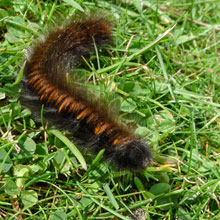
|

|

|

|
Next we noticed three interesting
wild flowers. Sea Mayweed with leaves which, when crushed, smell like
Chamomile; Eyebright that was used in treatments of eye infections –
hence the name; Yarrow that was used by soldiers to stem the flow of
blood in open wounds. Throughout this time an inquisitive Pied Wagtail
was dotting around the rock pools no doubt seeking out insects.
Sea Mayweed
|
Eyebright
|
Yarrow
|
Pied Wagtail
|

|

|

|

|
Suddenly, as we were scanning the
rocky shore for waders, a swooping, small raptor appeared chasing a
terrified Wheatear. The pair twisted their way around and between
rocks, with the raptor occasionally moving to a higher position before
swooping again on its intended prey. This continued for about a minute
before a Carrion Crow appeared on the scene and chased off the raptor,
leaving the Wheatear to live to fight another day. At first we thought
the raptor was a Kestrel but when we looked at the images that evening
we thought it could have been a juvenile Peregrine. (After posting on
Facebook we were advised that it was most probably a juvenile Merlin.)
We walked the beach for a half hour but, as it was at low tide, the
birds were very far away. We did see a small Stint-like bird fly past
but I missed the shot. I did though get some nice shots of another Pied
Wagtail foraging on the rocks.
Pictures Of The Week
Juvenile Merlin
|
Pied Wagtail
|

|

|
A large grey cloud was looming
threateningly bringing to an end our very pleasant, and at times, exciting walk
on the beach. We returned to the car before it rained. As we sipped tea and
chomped on lattice pastries we were still debating the identity of the raptor. It
had been a brief trip but the young Merlin stole the show.
3rd September 2017
Pencaitland and Musselburgh
It was dull and drookit in the
west but much brighter and dry in the east, but, more significantly,
there was a very infrequent visitor in the back gardens of Pencaitland-
a Hoopoe! This is a bird that is common in southern Europe but visits
Scotland very rarely. So after a rather disappointing (cold and late)
breakfast in Dalkeith Morrisons we drove east in search of this pretty
and rather exotic bird. We had to risk getting entangled in the traffic
around the Tour of Britain cycle race as Pencaitland was on its route.
As it turned out, the queue stopped right beside “The Green”, the
housing estate where the bird had be spotted. Within an hour of
arriving John and I had tracked it down to a particular back garden
and, with the help of a very kind lady who suggested it would be ok if
we took pictures over her fence, we rattled off quite a few photos in a
short period of time. The Hoopoe occasionally left the garden to the
safety of the trees but it seemed fairly settled in the area,
especially when it apparently had been getting regular treats of
mealworms supplied by a kind resident.
After about an hour we left
Pencaitland very satisfied with our work. We headed next to Musselburgh
Scrapes seeking the Common, Green and Pectoral Sandpipers and a
juvenile Spotted Redshank that had been reported there. Again we
managed to see all of these birds, albeit it in dimming light. The
Pectoral Sandpiper was probably a passage migrant from America maybe
blown by areas of low pressure across the Atlantic from the eastern
coast of North America. It is the most common North American wading
bird to occur here and has even started to breed in Scotland very
recently. The Spotted Redshank is most likely a migrant from northern
Europe or Siberia.
Common Sandpiper
|
Green Sandpiper
|
Pectoral Sandpiper
|
Spotted Redshank
|

|
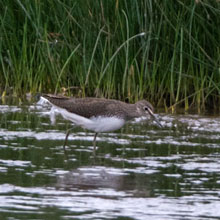
|
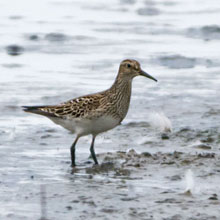
|

|
While watching the Spotted
Redshank an aggressive cock Pheasant shot out from the reeds and had a
right go at the large mass of Oystercatchers that were minding their
own business on the short grass. We thought the flock would have gone
up but instead a few individuals had a right go back at the aggressor.
We then had a flypast of some Widgeon and Shovelers. They circled a
couple of times but decided against landing and veered off towards the
sea.
I snapped a last shot at the
scrapes of a dinky wee Redshank stretching its wings. The light was
fading a bit so we decided to call it a day. On our way back to the car
we were surprised to see a Slavonian Grebe in late breeding plumage
fishing along with its chick. The chick was downing a fair-sized fish.
Our final picture was of a Black-tailed Godwits flying overhead into
the Scrapes.
Redshank
|
Slavonian Grebe
|
Juvenile Slavonian Grebe
|
Black - tailed Godwit
|

|

|

|
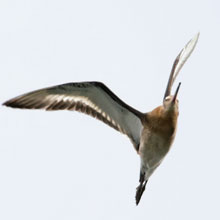
|
As we chewed our lattice pastries
washed down with strong tea we had a sort of smug satisfaction as we
had hit all of our targets for the trip – and that is about as rare as
the Hoopoe!
Pictures of the week:
Back To Top
|

